
Source: green pepper literature
stem cell (stem cell) is a class of self-replicating multi-potential cells, under certain conditions, it can differentiate into a variety of functional cells. According to their developmental stage, they are divided into embryonic stem cells and adult stem cells. According to their developmental potential, they can also be divided into totipotent stem cells, pluripotent stem cells and monopotent stem cells. At present, hematopoietic stem cells, embryonic stem cells, mesenchymal stem cells and induced pluripotent stem cells are studied more. Stem cells are called "universal cells" by the medical community because of their potential function of regenerating various tissues and organs. Stem cell therapy has become an emerging therapy after drugs and surgery. At present, clinical trials of stem cells involve nearly 100 diseases, including various cancers, Alzheimer's disease, diabetes, cirrhosis, spinal cord injury, etc. Stem cells provide an effective and promising method to overcome many difficult diseases in medicine, and their research heat has been high.
In recent years, there have been numerous high-quality research papers on stem cells, and more and more studies have proved that stem cells have important physiological and pathological functions. In recent years, among the projects funded by the National Natural Science Foundation, stem cell-related projects are also increasing, and a total of 329 stem cell-related projects will be awarded in 2022, indicating that stem cells are one of the current hot spots in life science and basic medical research. Xiaobian has organized 10 stem-cell related high-score articles for everyone, and attached the original link of each article, which helps to understand the research ideas of stem cells, and interested articles can jump to specific links to study the full text.
1
MLL3/MLL4 methyltransferase activities control early embryonic development and embryonic stem cell differentiation in a lineage-selective mannerNature GeneticsIF: 41.302023-04-03H3K4me1 methyltransferases MLL3 and MLL4 (KMT2D) are critical for enhancer activation, cell differentiation and development. However, the role of MLL3/4 enzyme activity and MLL3/4 mediated enhancer H3K4me1 in these processes is unclear. This article reports that constitutive elimination of MLL3 and MLL4 enzyme activity prevents the initiation of gastrula formation and leads to early embryonic death in mice. However, selective elimination of MLL3/4 enzyme activity in embryonic lineages, but not in extra-embryonic lineages, left gastrula formation largely intact. In line with this, embryonic stem cells lacking MLL3/4 enzyme activity can differentiate into three embryonic germ layers, but show abnormal differentiation into the embryonic ectoderm and trophoblast ectoderm. The failure of ExEn differentiation can be attributed to a significant reduction in enhancer binding of the lineage-determining transcription factor GATA6. In addition, we found that H3K4me1 catalyzed by MLL3/4 is largely dispensable for enhancer activation during ESC differentiation. These findings suggest that MLL3/4 methyltransferase activity is lineage selective in early embryonic development and ESC differentiation, but independent of enhancer activation.
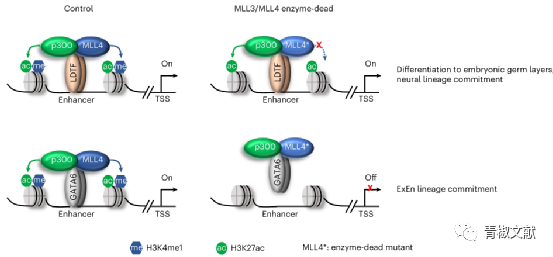
Original link: https://www.nature.com/articles/s41588-023-01356-4
2
Tissue memory relies on stem cell priming in distal undamaged areasnature cell biology IF: 28.212023-04-20 Epithelial cells involved in wound repair produce a more effective response to future injury, and this paper demonstrates that cellular adaptation caused by local tissue injury has no previous effects on a broad spatial scale. The authors demonstrated that a specific population of stem cells, far from the original injury, gave rise to long-term wound memory stem cells located in their own ecological niche. Remarkably, these distal memory cells are not involved in the first healing, but are pre-activated by priming. This cellular state, maintained at chromatin and transcription levels, leads to enhanced wound repair, reproduced in part by epigenetic perturbations. Importantly, traumatic memories have long-term harmful consequences, which exacerbate the development of tumors. Overall, the authors found that suborgan-scale adaptation to damage relies on spatially organized memory-specific stem cells, which are characterized by an operable cell state that establishes an epigenetic field of carcinogenesis and is prone to tumor onset.
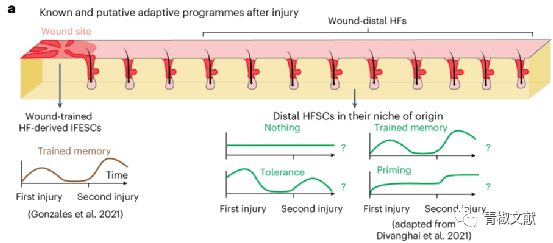
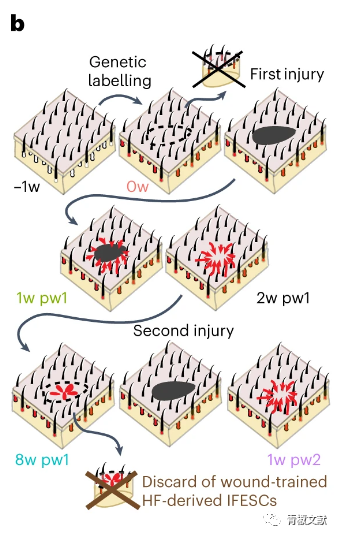
Original link: https://www.nature.com/articles/s41556-023-01120-0
3
Development and clinical application of human mesenchymal stem cell drugsScience Bulletin IF: 20.572023-05-15 Mesenchymal stem cells (MSCs) are widely used in the treatment of various clinical diseases due to their various advantages and remarkable therapeutic effects. Despite the long research time and complicated approval process, MSC therapy is still gradually developing and gaining popularity worldwide, including in China. This review reviews the research status and therapeutic effects of bone marrow mesenchymal stem cell therapy at the registration stage, and summarizes the research progress and challenges of bone marrow mesenchymal stem cells, especially odontogenic bone marrow mesenchymal cells, in the treatment of oral diseases.
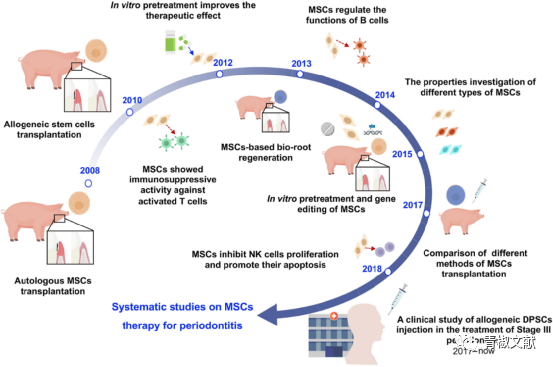
Original link: https://linkinghub.elsevier.com/retrieve/pii/S209592732300227X
4
The miR-148/152 family contributes to angiogenesis of human pluripotent stem cell- derived endothelial cells by inhibiting MEOX2Molecule Therapy Nucleic Acids IF: Human pluripotent stem cell-derived endothelial cells (hPSC-ECs) are a promising source of human endothelial cells and are urgently needed for studies of cardiovascular disease mechanisms, cell therapy, and drug screening. This study aims to explore the function and regulatory mechanism of the miR-148/152 family consisting of miR-148a, miR-148b, and miR-152 in hPSC-ECs, providing new targets for improving EC function in the above applications. Compared with the wild-type group, the miR-148/152 family knockout group significantly reduced the efficiency of endothelial differentiation of human embryonic stem cells (hESCs) and impaired the proliferation, migration and capillary tube formatting of ECs derived from them. Overexpression of miR-152 partially restored the angiogenic ability of TKOhESC-ec. In addition, mesenchymal homeobox 2 (MEOX2) was validated as a direct target of the miR-148/152 family. MEOX2 knockdown resulted in partial restoration of angiogenic capacity of TKOhESC-ec. Therefore, the miR-148/152 family is critical for maintaining the angiogenic capacity of hPSC endothelial cells and can be used as a target to enhance the functional benefits of endothelial cell therapy and promote endogenous vascular remodeling.
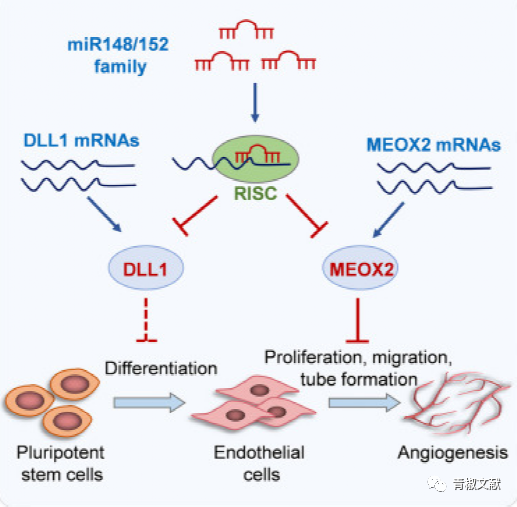
Original link: https://linkinghub.elsevier.com/retrieve/pii/S2162253123001063
5
Aberrant activation of TCL1A promotes stem cell expansion in clonal haematopoiesisNatureIF: 69.52023-04-20 Mutations in more than one driver gene increase the fitness of hematopoietic stem cells (HSCs), resulting in clonal hematopoiesis. These lesions are precursors of blood cancers, but the basis of their fitness advantage remains largely unknown, in part due to the lack of large cohorts with which to assess clonal amplification rates by longitudinal sampling. This study, in order to circumvent this limitation, develops a method to infer the expansion rate from data at a single point in time. The authors applied the method to 5071 patients with clonal hematopoiesis. A genome-wide association study revealed that common genetic polymorphisms in the TCL1A promoter were associated with slower amplification rates during clonal hematopoiesis, but varied by the influence of driver genes. Genes carrying this protective allele had significantly reduced growth rates in clones with TET2, ASXL1, SF3B1, and SRSF2 drive mutations, but this effect was not seen in clones with DNMT3A drive mutations. TCL1A is not expressed in normal or dnmt3A mutated hematopoietic stem cells, but the introduction of TET2 or ASXL1 mutations leads to expression of TCL1A protein and expansion of hematopoietic stem cells in vitro. This protective allele restricts the expression of TCL1A and the expansion of mutant hematopoietic stem cells, as well as the expression of experimental knockout TCL1A. Forced expression of TCL1A promotes the expansion of human and mouse hematopoietic stem cells. The results suggest that the fitness advantage of cloning driver genes of several common mutations in hematopoiesis may be mediated by TCL1A activation.
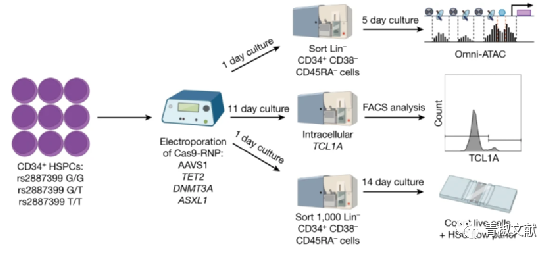
Original link: https://www.nature.com/articles/s41586-023-05806-1
6
Aspirin use and bleeding events during thrombocytopenia after autologous stem-cell transplantation for multiple myelomaFrontiers in Oncology IF: 5.732023-05-14 For cardiovascular (CV) comorbidites requiring antiplatelet therapy (APT), optimal treatment during chemotherapy-induced thrombocytopenia remains elusive because the risk of bleeding must be balanced against the risk of CV events. The objective of this study was to assess the risk of APT bleeding during thrombocytopenia in patients with multiple myeloma who received high-dose chemotherapy and subsequent autologous stem cell transplantation (ASCT). The authors evaluated bleeding events, management strategies for ASA intake during thrombocytopenia, transfusion needs, and occurrence of CV events in patients treated with ASCT at Heidelberg University Hospital from 2011 to 2020. Patients were found to have platelet counts in the safe range of 20-50/nl if they took ASA until platelet reduction, although an elevated risk could not be ruled out. If ASA is used for secondary prevention of CV events, then assessing risk factors for bleeding and prolonged thrombocytopenia before regulation is critical for adapting strategies for ASA intake during thrombocytopenia.
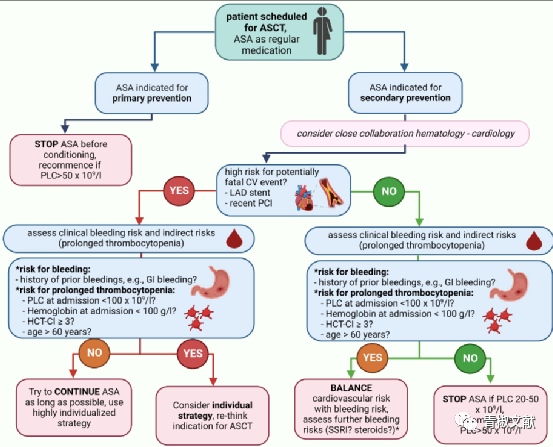
Original link: https://www.frontiersin.org/articles/10.3389/fonc.2023.1168120
7
A pumpless monolayer microfluidic device based on mesenchymal stem cell-conditioned medium promotes neonatal mouse in vitro spermatogenesisStem Cell Researh & TherapyIF: 8.072023-05-11 Child cancer treatments-induced gonadal toxicity leads to permanent infertility/subinfertility in nearly half of men. Current clinical and experimental methods are limited to cryopreservation of prepubertal strips and in vitro spermatogenesis, and are insufficient to achieve expanded spermatogonial stem/progenitor cells and in vitro spermatogenesis. This study reports the supporting effect of bone marroe-derived mesenchymal cell coculture in preadolescent mouse testis, which was insufficient after 14 days of static culture due to lack of microvascular flow and diffusion. We have generated a novel, pump-free, monomeric dimethicone layered testicular chip platform that provides a continuous and stable microfluidic control and contributes to real-time paracrine secretion of allogenic bone marrow mesenchymal stem cells. Future fertility preservation in male childhood cancer survivors depends on the protection/expansion of the spermatogonial stem cell/progenitor cell pool and induction of spermatogenesis in vitro. The results suggest that a novel microfluidic testicular chip device based on bone marrow-derived mesenchymal stem cells supports in vitro maintenance of stem cells and spermatogenesis in preadolescent mice. This new, cell therapy-based microfluidic platform may help establish a safe, precision-based cell and tissue storage protocol for the recovery of preadolescent fertility in the future.
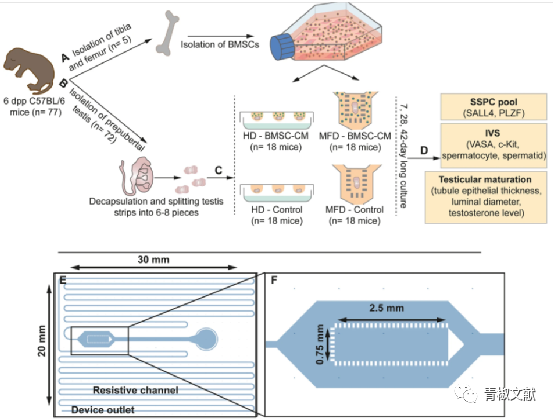
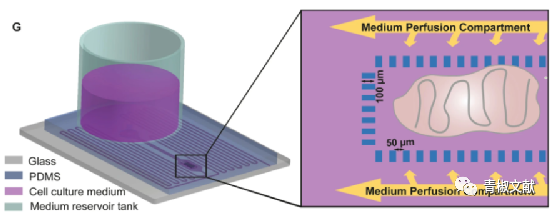
Original link: https://stemcellres.biomedcentral.com/articles/10.1186/s13287-023-03356-x
8
p140Cap inhibits beta -Catenin in the breast cancer stem cell compartment instructing a protective anti-tumor immune responsenature communicationsIF: 17.692023-05-11p140Cap adaptor protein is a tumor suppressor in breast cancer and is associated with a favorable prognosis. This study highlights the role of p140Cap in coordinating local and systemic tumor external events, ultimately leading to inhibition of the function of polymorphonuclear medullary derived suppressor cells. Integrated transcriptomics and preclinical studies have revealed that p140Cap controls the upper axis, inhibits β-catenin via upstream, limits tumor-initiating cells to limit the release of the inflammatory cytokine G-CSF, and polymorphonuclear myeloid source inhibits cells necessary for their local and systemic tumor beneficial functions. Mechanistically, inhibition of β-catenin by p140Cap is dependent on its ability to locate and stabilize β-catenin destruction complexes, promoting enhanced β-catenin inactivation. Overall, this study suggests that p140Cap activity is capable of preventing tumor microenvironment invasion through immunosuppression by inhibiting the systemic mobilization and local invasion of PMN-MDSCs. Functional studies in vitro and in vivo suggest that the reduction in G-CSF content is a function of p140Cap's ability to reduce the TIC region, which in turn is responsible for G-CSF production. The effect on the TIC compartment depends on the ability of p140Cap to enter and stabilize the β-catechin destruction mechanism, thereby inhibiting β-catechin activity. Clinical studies in women have shown that low p140Cap expression is associated with a reduction in tumor-infiltrating lymphocytes and more aggressive tumor types, highlighting the potential of p140Cap as a targeted β-catenin/tumor-initiating cells /G-CSF/ polymorphonuclear medulla-derived inhibitory cell axis to restore an effective anti-tumor immune response.
Original link: https://www.nature.com/articles/s41467-023-37824-y/
9
Regulation of neural stem cell differentiation and brain development by MGAT5-mediated N-glycosylationStem Cell Reports IF: 7.292023-05-11 Undifferentiated neural stem cells and progenitor cells (NSPCs) alter differentiation when they encounter extracellular signals that bind plasma membrane proteins. Membrane proteins are regulated by N-chain glycosylation, which makes it possible for glycosylation to play a key role in cell differentiation. This study evaluated the enzymes that control n-glycosylation in NSPC and found that the loss of enzymes responsible for the production of β1, 6 N-glycans, and n-acetylaminotransferase V (MGAT5) led to specific changes in NSPCs differentiation in vitro and in vivo. Compared to wild-type controls, zero NSPCs of MGAT5 homozygotes formed more neurons and fewer astrocytes during culture. In the cerebral cortex, the loss of MGAT5 leads to accelerated neuronal differentiation. Rapid neuronal differentiation leads to depletion of NSPCs niche cells, leading to metastasis of cortical neuronal layers in MGAT5-deficient mice. The glycosylase MGAT5 plays a critical and previously unrecognized role in cell differentiation and early brain development.
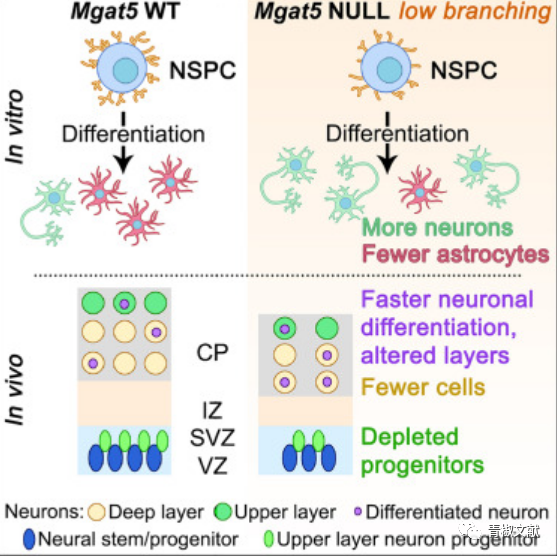
Original link: https://doi.org/10.1016/j.stemcr.2023.04.007
10
High targeting specificity toward pulmonary inflammation using mesenchymal stem cell-hybrid nanovehicle for an efficient inflammation interventionAdvanced Healthcare MaterialsIF: 11.092023-05-09 Pneumonia is one of the most clinically reported tissue inflammation, and successful suppression of inflammation is essential to stop the inevitable fatal lung degeneration. Glucocorticoids, such as methylprednisolone (MP), are the most commonly used drugs to control the progression of inflammation, but there are also problems with systemic side effects caused by large doses and frequent administration. Efficient MP targeting inflammatory lung sites may overcome this challenge. Therefore, this study developed an inflammatory targeting bionic nanocarrier that hybridized the cell membrane of mesenchymal stem cells with liposomes, called MSCsome. This hybrid nanocarrier has high targeting specificity for inflammatory lung cells due to its good pulmonary endothelial penetration and high uptake capacity of inflammatory lung cells. A single dose of this MP-supported hybrid nanocarrier achieved significant treatment of lipopolysaccharide-induced lung inflammation, and negligible treatment-induced side effects were observed. This study provides a powerful bionic inflammatory targeting nanocarriers to solve the current challenge of targeted inflammatory interventions using bionic strategies.
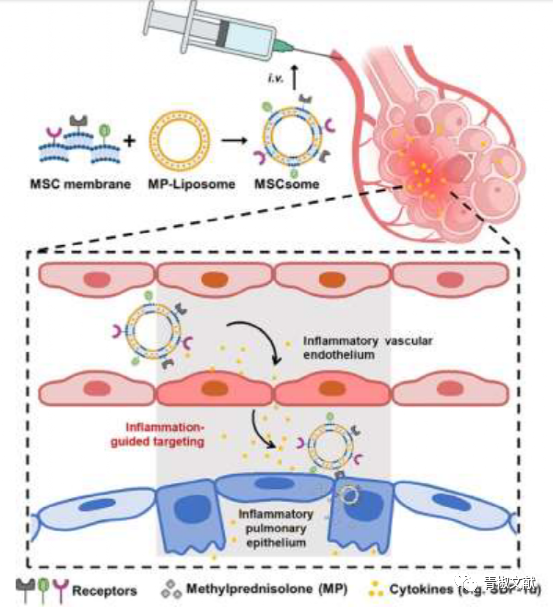
Original link: https://doi.org/10.1002/adhm.202300376
Stem cell research is a broad and complex field involving many different methods and techniques. The following are the general steps and commonly used methods for stem cell research:
1. Stem cell sources: Stem cells can be obtained from different sources, including embryonic stem cells, stem cells in adult tissue, and induced pluripotent stem cells (iPS cells).
2. Stem cell culture: Stem cells need to be maintained and expanded under appropriate culture conditions. The composition and formulation of the medium vary according to the specific study purpose and cell type.
3. Differentiation and reprogramming: Researchers can induce stem cells to differentiate into specific cell types by changing culture conditions or adding specific signaling molecules. In addition, it is also possible to reprogram differentiated cells into a pluripotent stem cell state through techniques such as gene transfer.
4. Characterization and identification: Researchers use a variety of techniques to characterize and identify stem cells to determine their stem cell properties and state of differentiation. This includes methods such as immunostaining, flow cytometry, gene expression analysis and proteomics.
5. Functional analysis: Researchers evaluate the function and properties of stem cells through further experiments. This may involve assessment of cell proliferation and differentiation capacity, apoptosis analysis, genetic experiments such as gene knockout or overexpression, and functional tests in vivo or in vitro.
6. Applied research: Stem cell research also includes exploring the use of stem cells in regenerative medicine, disease modeling, and drug screening. This could involve transplanting stem cells into animal models for in vivo experiments, or using stem cells to build tissue engineering and organ models, for example.
In stem cell research, scientists are also constantly developing new techniques and methods to better understand the properties and application potential of stem cells. Research in this field is of great significance for the advancement of medicine and biology.